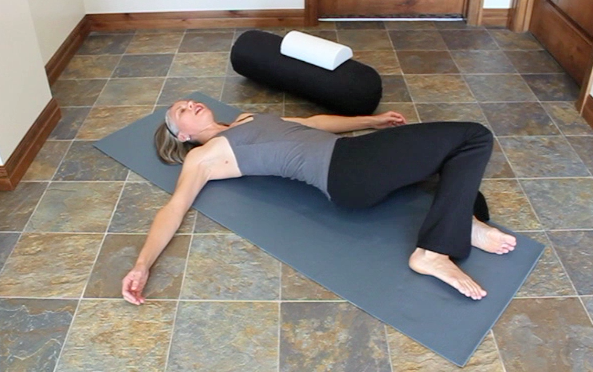| Pelvic pain of any kind: pubic symphysis pain, tailbone pain, pudendal neuralgia, bladder pain syndromes, pain postpartum, testicular pain, hamstring strain at pelvis insertion, and pelvic floor tension in general will benefit from increased blood flow and healthy tissue mobility. I had a client recently say on the second visit, "Every time I do the body scan or check in with my breathing, I notice that I am holding the muscles of my pelvic floor. How do I stop tensing the muscles all the time?" Well, that is the million dollar question isn't it? Yet, the first step in creating change, is to notice the "behavior" in the first place. It is possible to stop tensing the muscles all the time. |
First Comes Awareness, and then Change: 3 Key Steps to Decrease Tension
- BREATHE. Breathing is the bridge between the autonomic nervous system, musculoskeletal system and the organs. With every breath, there should be movement of the muscles of the core, which will also move the organs. In this movement, the organs and connective tissues stay fluid, blood is circulating, delivering oxygen to the tissues and returning waste back to the heart. To get a good visual of the movement during breathing watch this video (bonus if you speak french). The inhale breath activates the sympathetic branch of the ANS, the exhale breath activates the parasympathetic branch. Slow, rhythmic breathing with a longer exhale can bring in a state of calm which can reduce tension patterns.
- REGULATE THE AUTONOMIC NERVOUS SYSTEM (ANS). Typically this requires getting reconnected with the body: feeling your body and being IN your body. Most of my clients benefit from downregulation techniques that can boost the parasympathetic response which governs our health, growth, restoration and social engagement. If you really want to dive into understanding the dynamics of our ANS, learn more about the work of Stephen Porges, MD and The Polyvagal Theory.
- MOVE. EXERCISE. DANCE. STRETCH. Some of my favorite movements and movers: Feldenkrais Method, Anatomy in Motion, The Melt Method, Nutritious Movement. Below I share with you a simple way to mobilize the tissues of the perineum with a soft rubber ball.












 RSS Feed
RSS Feed